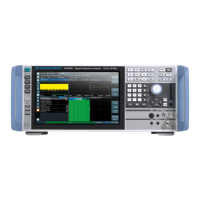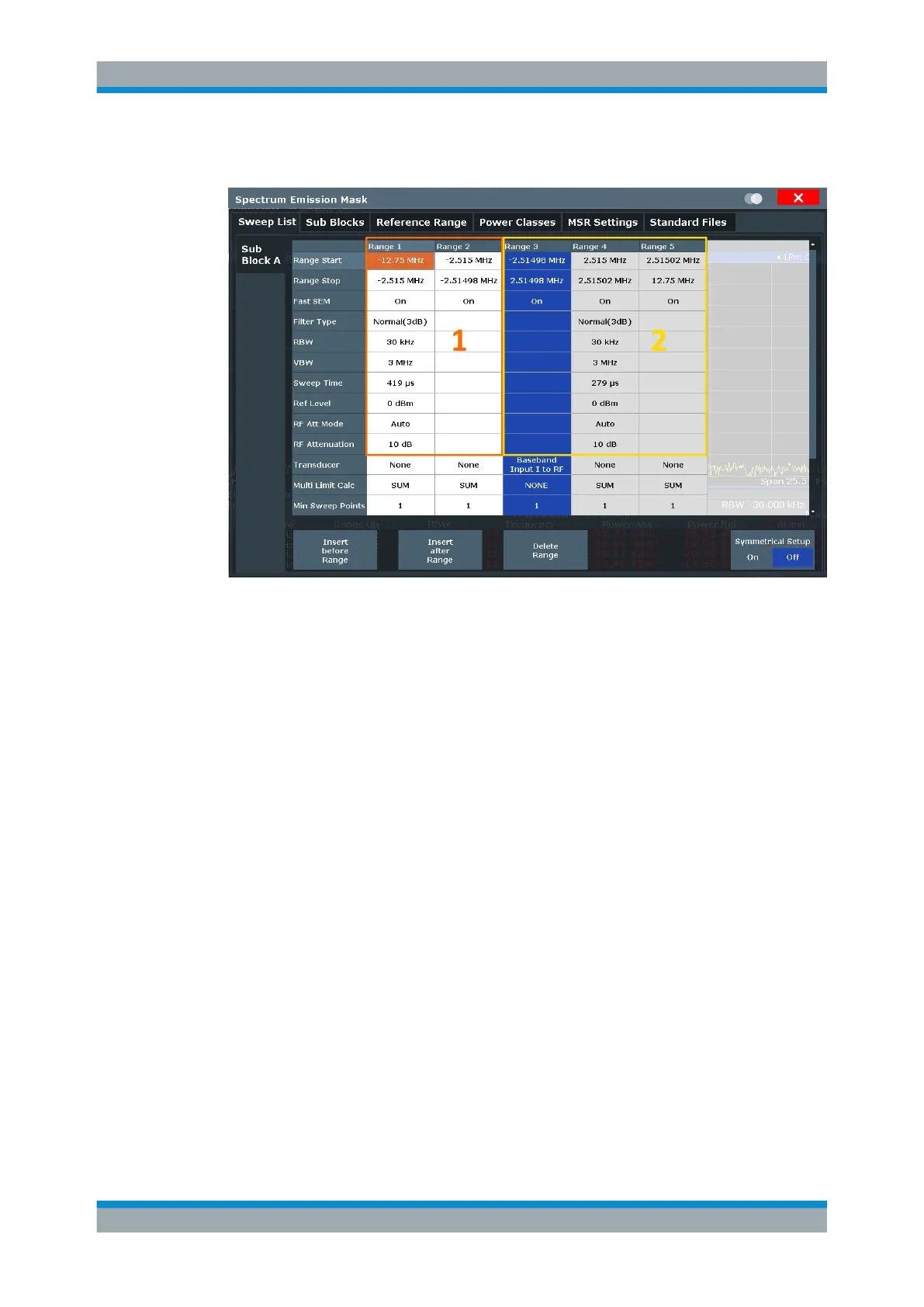Measurements and Results
R&S
®
FSVA3000/ R&S
®
FSV3000
216User Manual 1178.8520.02 ─ 01
Example
Figure 7-37: Sweep list using Fast SEM mode
In Figure 7-37, a sweep list is shown for which Fast SEM is activated. The formerly five
separately defined ranges are combined to two sweep ranges internally.
7.6.4.4 Multi-Standard Radio (MSR) SEM Measurements
Multi-standard radio (MSR) measurements allow you to perform SEM tests on signals
with multiple carriers using different digital standards. MSR measurements are descri-
bed in the specification 3GPP TS 37.141. Various typical combinations of standards for
base station tests are described, e.g. LTE FDD and W-CDMA carriers. By performing
an MSR SEM measurement you can determine if or how the different carriers affect
each other, i.e. if unwanted emissions occur. On the R&S FSV/A, the MSR SEM mea-
surement is a standard measurement as for single carriers. The MSR settings merely
provide a convenient way of configuring the sweep list for all required ranges according
to the specification quickly.
Refined settings allow the R&S FSV/A to calculate the SEM limits according to stan-
dard 3GPP 37.141 V12.2.0, which distinguishes between base station configurations
and power values.
7.6.4.5 SEM with Multiple Sub Blocks ("Multi-SEM")
In the Spectrum application application only, spectrum emissions can be measured for
multiple sub blocks of channels (also referred to as a "Multi-SEM" measurement). Sub
blocks are a set of multiple ranges around a defined center frequency (carrier). Multiple
sub blocks can include gaps or overlap, and each sub block defines a separate mask.
Spectrum Emission Mask (SEM) Measurement

